
I skimmed through this book the week before we were to read it. I wish I had read it thoroughly, although I don’t think that would have mattered. By the time I reached the end, I had to ask my kiddos to give me a minute to compose myself to finish reading. What a tender, tender story! I just learned that there is a named “movement” in the world called “death positivity.” I didn’t know it was a named thing, but I definitely find value in talking about the reality of death with my kiddos. I don’t sugarcoat it, but I try to explain things at an appropriate comprehension for them. Neither of them appear to be scarred by discussing the topic. All that to say that I might need to use a recorded read-aloud for the rest of the week; I can’t keep crying during storytime!
Social Studies
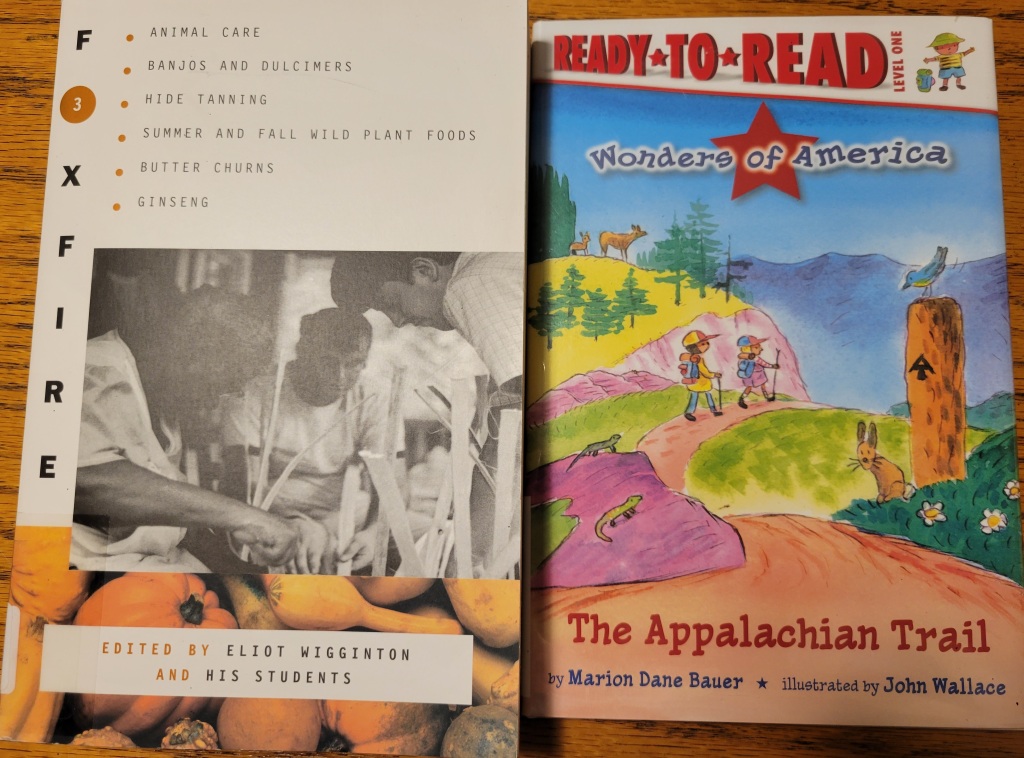
These Foxfire books are so neat! A collection of a periodical of the same name, there is so much in these books with information, culture, old photos – if my kiddos were a little older I think they would have spent hours poring over these pages.
We used this books as an opportunity to learn about topographical maps and marveled at how the mountains look like wrinkles on the map.
Art
This was a great little book to go along with our “facial expressions” lesson. Simple step-by-step guide to drawing facial features and a handful of emotions. I used a dry erase board and the kids marveled at how emotions could be changed just by different mouth and eyebrow placement.
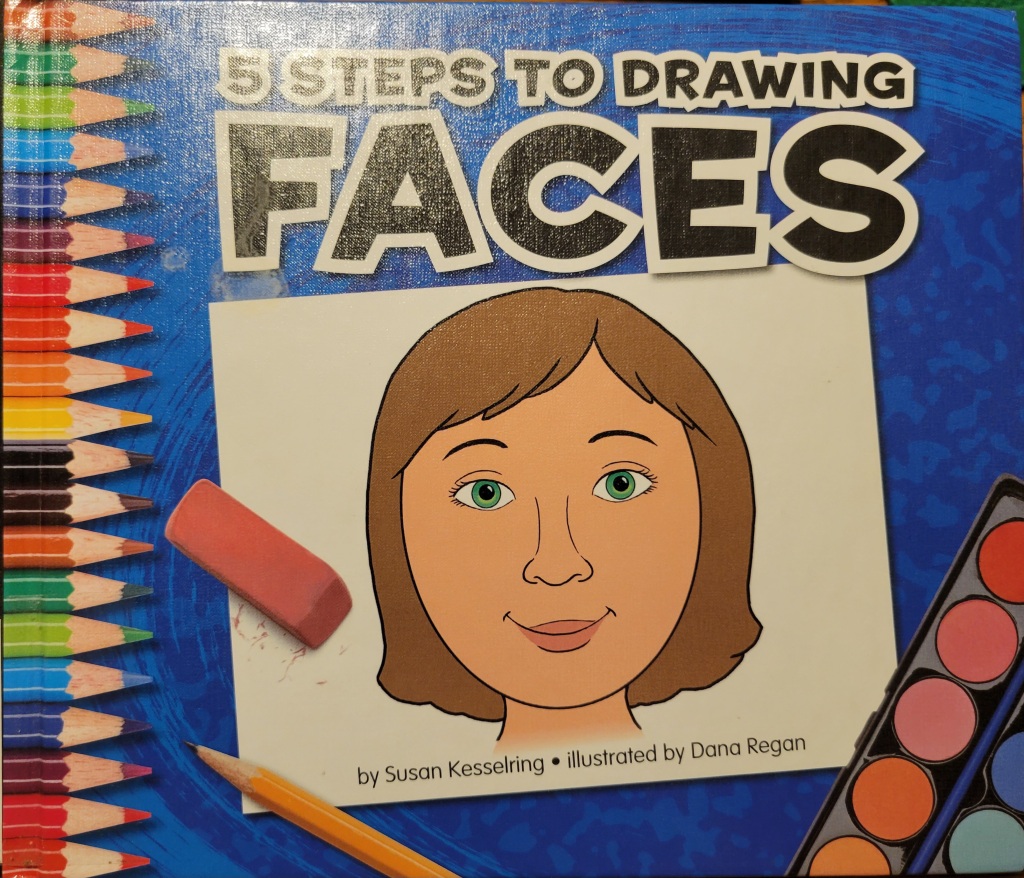
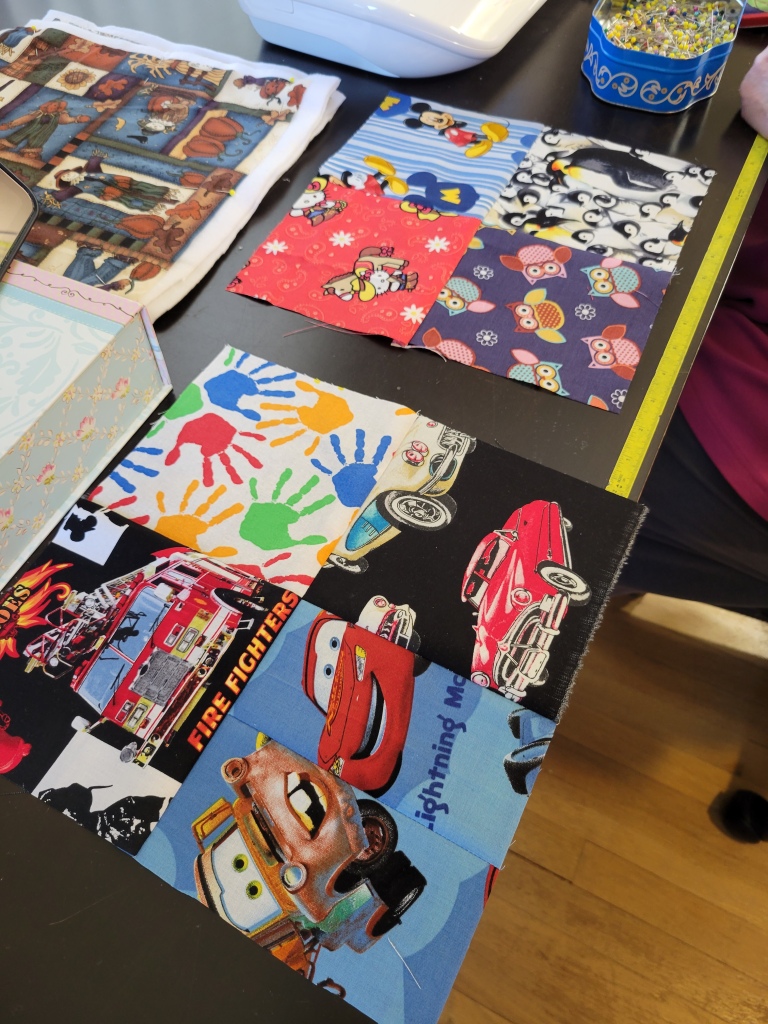
We took a trip to Honeygram’s (my mother) for some quilting learning. The kids were able to pick out 4 pieces of fabric that meant something to them and then we encouraged them to think of a memory that tied back to the particular piece. That was a little challenging for a 3 and 5 year old, but we came up with some good stories to go with our mini-quilts.
Math
I initially selected “The All-Together Quilt” for Language Arts day, but as I read it, we found that it fit much better in the math section.
A group at a community center all pitch in to select fabric, cut them to size, choose pattern, and sew together a beautiful quilt to donate to the local library.
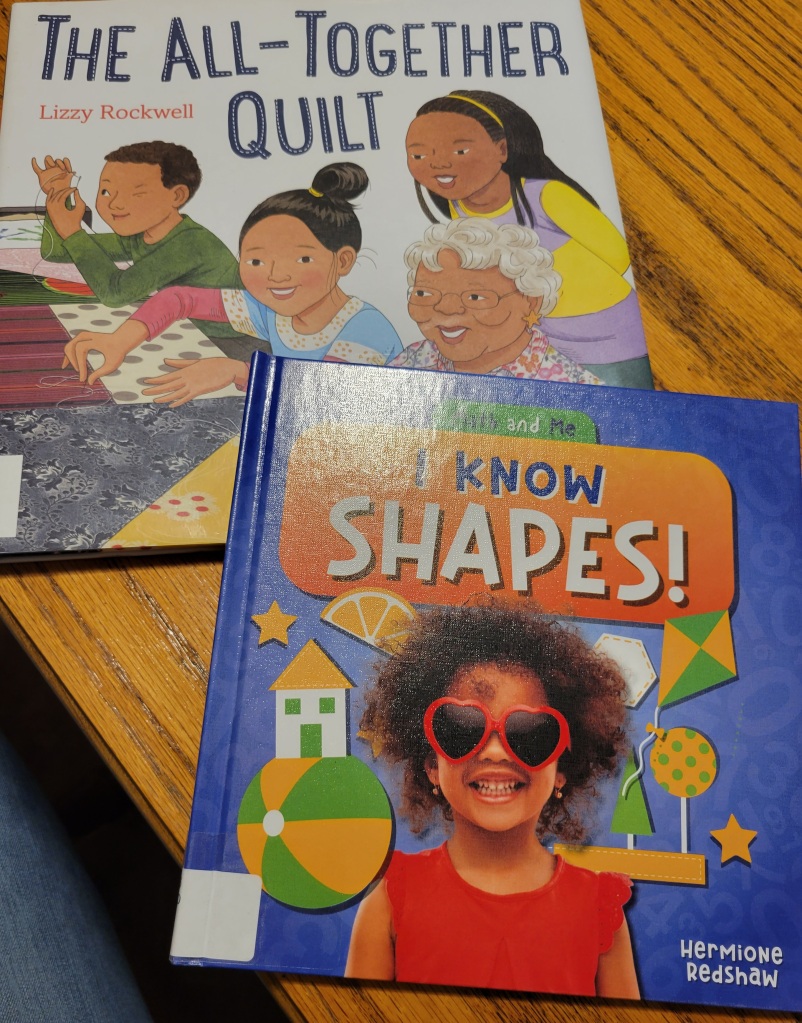
Science

We read these books and then the kiddos watched a series of YouTube videos on coal mining in old Appalachia, how the cotton gin worked, and how cotton is grown, harvested, and processed today.
Additional Books:
We got Dolly Parton’s book through her Imagination Library and it must have been a common thing to piece a quilted coat together in Appalachia. This story was easier for my 3 year old to swallow, as the father survives in her story.
“Good People Everywhere” talks about how all sorts of people in a community do all sorts of good things – some we see and some we don’t until we need their help. This was a good bedtime read aloud.
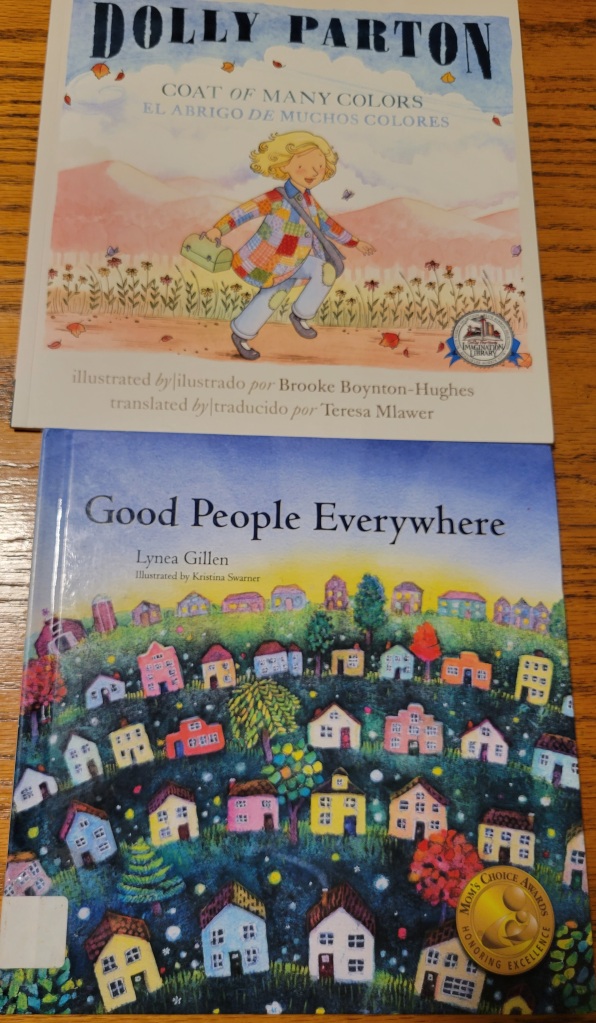
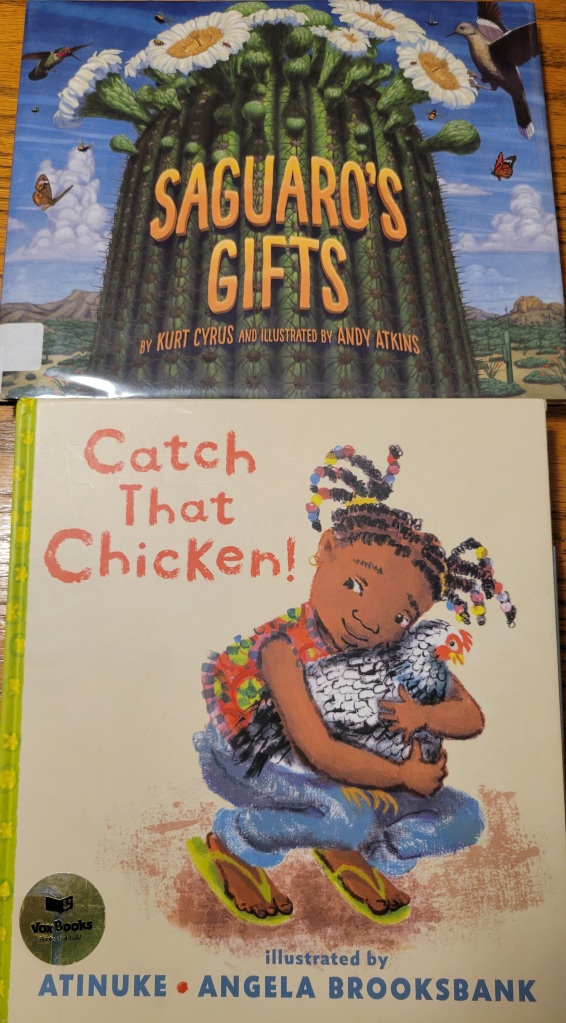
I looked for books in my master list that talked about community and gifts, and these two popped up. I love a good nature picture book and since we don’t live anywhere near a desert, “Saguaro’s Gifts” was a very good read. “Catch That Chicken!” is about a little girl who is so fast at catching chickens, but she learns a better way than being fast through the advice of her family and community members. My 5 year old especially liked this book because it is a Vox book and he can listen to it without me having to read it for him.
I borrowed these books because they were about community and clothing, however, I chose not to read them to my kiddos this time. “Ogilvy” was a little confusing as the bunny kept changing what he called his outfit based on what he would be allowed to do that day with the group. It wouldn’t have made much sense to my kids. “The Most Beautiful Village in the World” was a truly sweet book of a child and his father going to market in Afghanistan. I could have read it to the kids and skipped the last page, but I don’t like to leave things out of stories. The author wrote this story to talk about a village wiped out from war. We have talked about war before, but I decided that The Rag Coat had enough heavy, sad topics in it that we could avoid the subject of war until another time. What I find most fascinating about it is that the author/illustrator is Japanese and this was translated into English.

I found another short rhyme from my Mother Goose book to fit the topic this week:
Old Mother Twitchett had but one eye,
“A Needle and Thread” from Mother Goose
And a long tail which she let fly;
And every time she went through a gap,
A bit of her tail she left in a trap.
Disclaimer: This site uses some affiliate links. This costs you nothing, but helps supplement our homeschooling costs.
Complete Book List:
- “The Rag Coat” by Lauren Mills
- “Foxfire 3” by Eliot Wigginton
- “The Appalachian Trail” by Marion Dane Bauer
- “5 Steps to Drawing Faces” by Susan Kesselring
- “The All-Together Quilt” by Lizzy Rockwell
- “I Know Shapes!” by Hermione Redshaw
- “Coal Energy” by Elsie Olson
- “The Invention of the Cotton Gin” by Nikole Brooks Bethea
- “Coat of Many Colors” by Dolly Parton
- “Good People Everywhere” by Lynea Gillen
- “Saguaro’s Gifts” by Kurt Cyrus
- “Catch That Chicken!” by Atinuke
- “Ogilvy” by Deborah Underwood
- “The Most Beautiful Village in the World” by Yutaka Kobayashi







